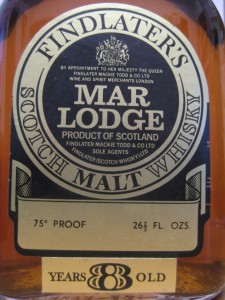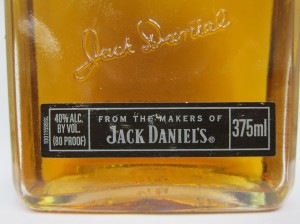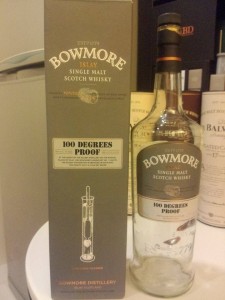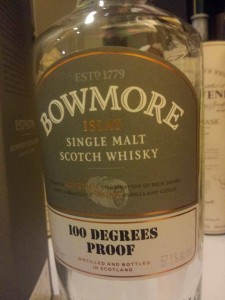Bowmore 100 Degrees….Proof?
Before I introduce this Bowmore whisky, let’s talking about the “proof" at first.
Nowadays, Alcohol By Volume (ABV) is commonly using for indicating the strength of alcohol contents in alcoholic drinks. ABV is measured by the volume ratio of pure alcohol in a liquid at 20 degrees Celsius, e.g. ABV 40% that 40% of pure alcohol in a certain portion of liquid.
You may see some old bottle of whiskies with label showing proof for indicating the alcohol strength as the photo below.
In fact there are two proof systems, namely UK and US. The example shown above is a Scotland whisky which eventually applied UK proof. The conversion between ABV and UK proof is quite simple, UK proof/1.75 = ABV %. By using above example, 75 degree proof is equivalent to ABV 42.8%. However, UK has been using ABV to display alcohol strength since 1 January 1980.
US always uses ABV to determine and indicate alcohol strength on drinks but there is a proof system for US. The conversion with ABV is different from UK proof. It is simply divided the degree figures by two. Some whiskey producers show ABV on label in compliance with regulations as well as US proof at the same time. The photo below is an example of showing both ABV and US proof on label.
Back to a foundation question – where was proof" from? It was rumored that in the 16 – 17 th century the seamen were allocated to rum while they were sailing on the sea. In such a dangerous yet boring journal, hard liquor became a necessity to seamen, especially in such an old days. Yes, we said hard liquor, that the liquor must be hard enough. Some ship owners might dilute the rum with water to save costs but the seamen obviously disagreed. Some people discover a simple method to determine the alcohol strength, that was pouring alcohol onto the subjected liquor and passed if it was able to ignite. The marginal point is so-called 100 proof. Oh! What a manhood story!
Yes, it was a manhood story, nothing more than a story. The truth of establishing proof system was to determine the tax level over the alcoholic drink, the higher the strength the higher the tax being imposed.
The bedtime story is over and now back to this Bowmore 100 Degree Proof which is available at duty free channels.
Bowmore 100 Degrees Proof, 700 ml, 57.1%
Nose: Honey, sea water, straw ash, hay, clove
Palate: Nectar, sea water, smoked fish, ash
Aftertaste: Medium length, smoked fish, ash, spices
Comment: Light honey at front, then weaves rolled, accompanying with ash and hay, scent like wildfire aftermath, touch of clove adding layer. Though high alcohol strength, not overwhelming alcohol on palate, still honeyed smoked seafood. Medium length aftertaste, smoky and spices. Rather flat on nose while rich and solid in mouth, so as to aftertaste. A clear peaty and maritime dram, heavy but easy to drink, a good whisky.






